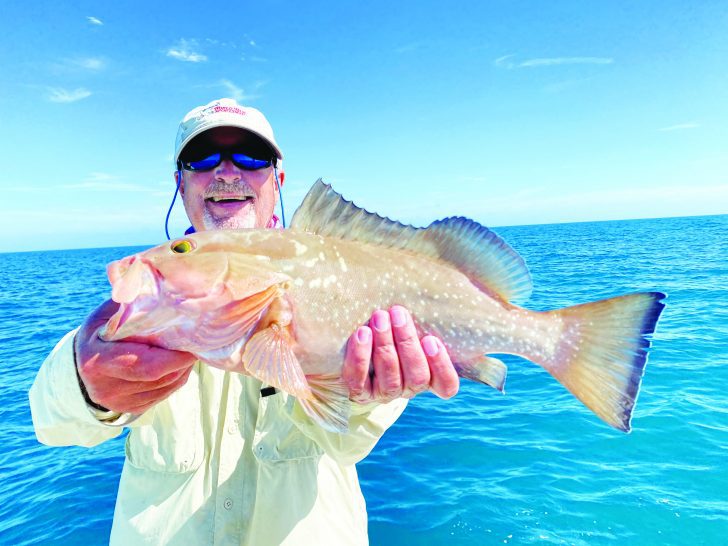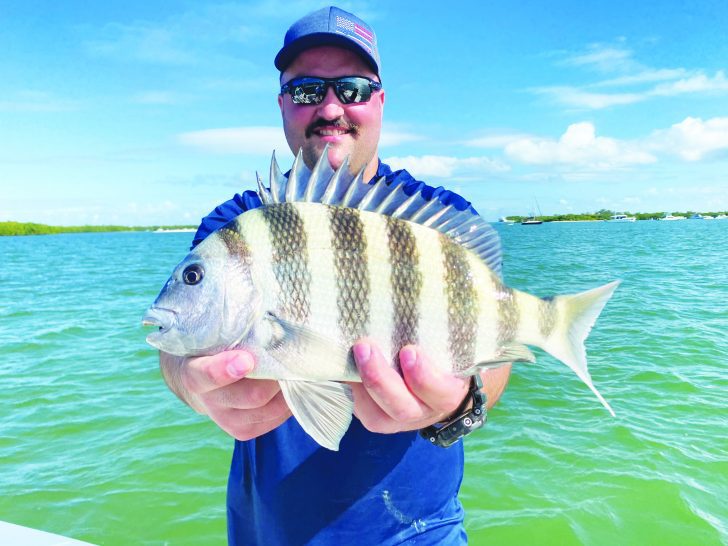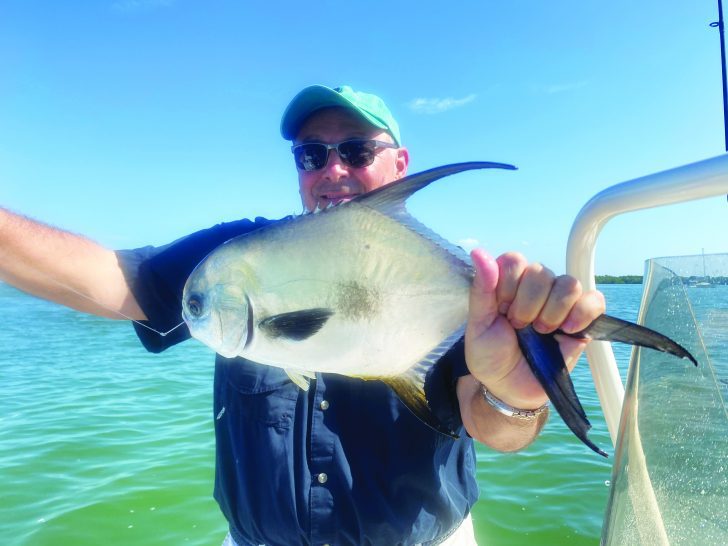Capt. Terry Fisher

Prior to this however, April Tarpon will be found cruising northward and along the beaches. They are cruising the passes, Wiggins, Big Carlos, Redfish and Captiva and numerous areas of Pine Island Sound. These fish are migrating in schools from the south and are feeding on various baits in their paths. Live/dead ‘baits of choice’ include blue crab, mullet, pinfish, threadfin, pilchard, mackerel and catfish fillets. Effective techniques include weighted presentations on the seabed or under corks/floats. Use strong equipment, such as 6000-8000 series reels with at least 30-40lb. line rated rods. I use 65lb. rated test line and 60-80lb. rated leaders to do the job. Also, use 6/0-9/0 circle hooks.
INSHORE: fishing was good in March and should continue. With the higher tides, stronger currents and more bait fishes, fishing in April should prove to be excellent. While snook, redfish and seatrout remain closed to harvest, the excitement of targeting and landing these species will offer a tremendous amount of enjoyment together with memories of a lifetime. Practice makes perfect, so get out there, locate the fishing holes and when the harvests open, you will be ready to have a ‘fish’ fry with your friends and family. Many times, it’s the ‘hunt’, not the kill that provide the better experiences and memories. I applaud the FWC for strictly managing the harvest quotas and seasons that protect all species. Especially with all of the boats and anglers putting lots of pressure on our estuaries and offshore reefs.
Expect to catch seatrout, Spanish mackerel, Pompano, Jack Crevalle and ladyfish on the deeper grass flats in open waters. Snook should be plentiful in the passes, just off the beaches, around docks and mangrove islands as water levels begin to rise higher offering boater’s access to more fishing spots. Artificial presentations with paddle tails, spoons and top water will all produce. Live shrimp and bait fish will produce the most catches.


OFFSHORE: will offer anglers more success than the winter months as migratory species such as, permit, cobia, blackfin and kingfish make their appearances in open water, but more so around reef structures. Decent size mangrove snapper and lane snapper should be plentiful in depths of 45 or more feet. Larger grouper and snapper will require a trek of about forty miles offshore to fish waters in 85’-110’. To make a fishing adventure of the latter, one should have a boat with at least a one hundred-fifty (150) mile fuel range, equipped with a VHF radio and other back up satellite communication system. Wind will dictate when and if one should go or not.


This is Captain Terry Fisher of Fish Face Charters LLC wishing everyone tight lines and safe boating. Contact me at 239-357-6829 or email me at fishfacecharters@yahoo.com to book a charter on my vessel or yours. Check out my website at www.fishfacecharters.com.
